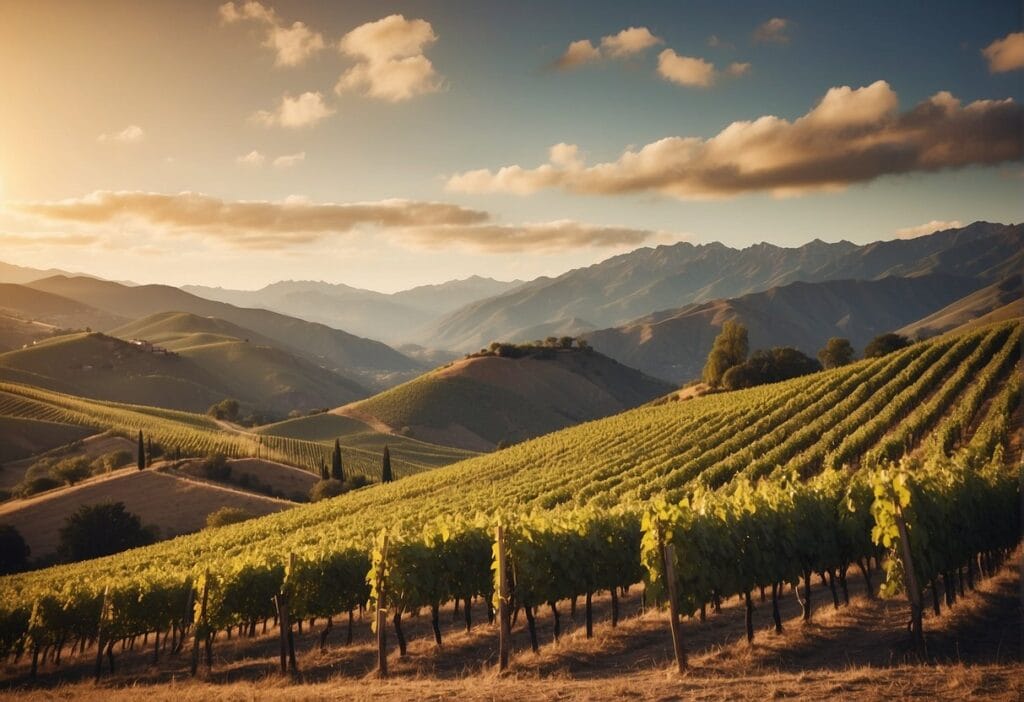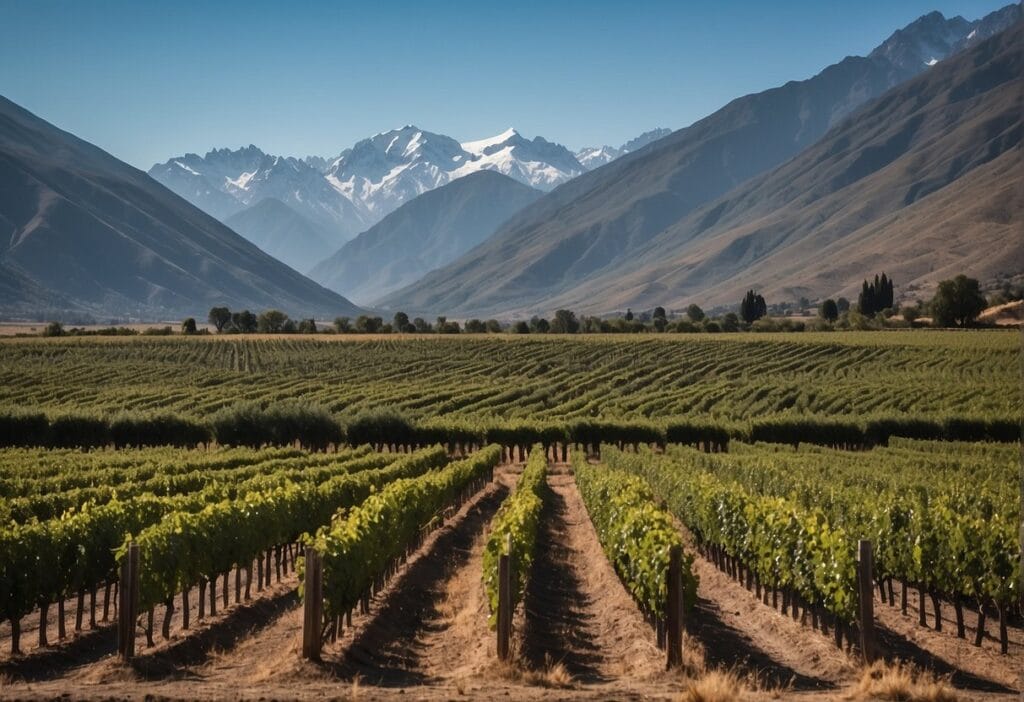Trentino-Alto Adige, nestled in the northernmost part of Italy, is a unique tapestry of cultural and viticultural elements. Sprawling amidst the serene beauty of the Dolomites and the Italian Alps, this wine region stands distinct for its amalgamation of Italian and Austrian influences, making it a fascinating destination for wine enthusiasts like you.
With its multifaceted history, you’ll find an intriguing blend of languages, traditions, and, most importantly, a rich array of wines that tell the story of this borderland.
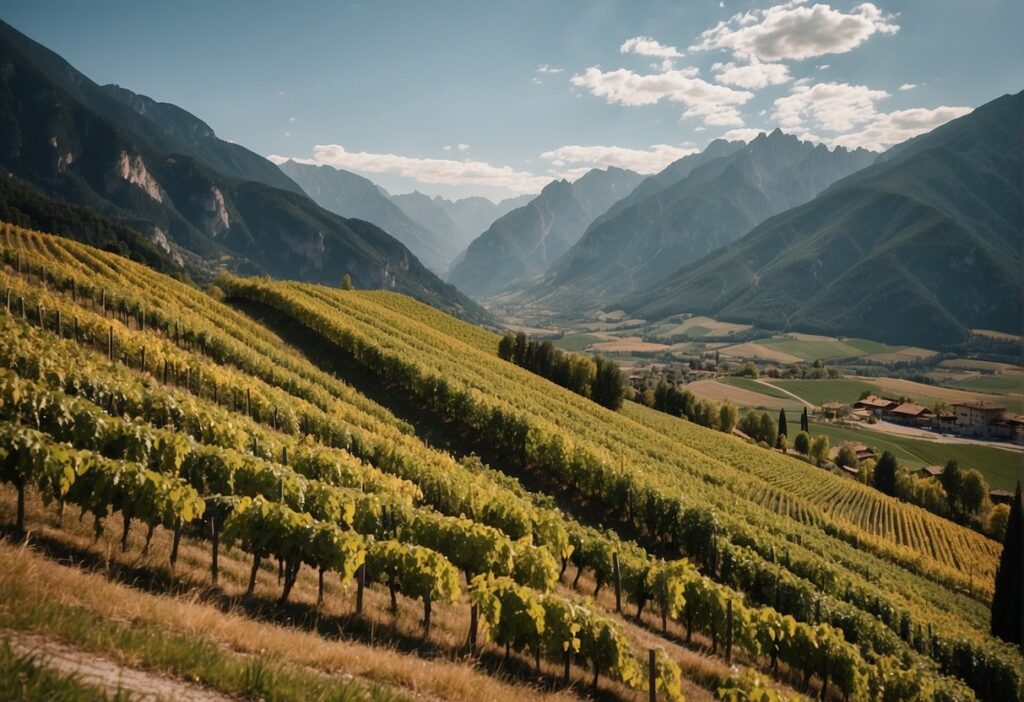
As you explore Trentino-Alto Adige, you’ll discover that the diversity of the terrain leads to a variety in both grape cultivation and wine styles. The region is split into two provinces: Alto Adige (Südtirol) to the north, where you’re likely to encounter the German language as much as Italian, and Trentino to the south, with a more Italian ambiance.
Within these provinces, the wines range from crisp, aromatic whites in Alto Adige, reflecting its alpine climate, to robust, flavorful reds in Trentino, mirroring the warmer valley vineyards. The conscientious viticulture and winemaking practices here ensure that each glass captures the essence of the region’s distinct geography and climate.
Key Takeaways
- Trentino-Alto Adige offers a rich blend of Italian and Austrian cultural influences.
- The wine styles vary significantly between the cooler, white-dominated Alto Adige and the warmer, red-focused Trentino.
- The region’s strict adherence to viticulture and winemaking traditions guarantees high-quality wines representative of its diverse terroir.
History and Culture
The Trentino-Alto Adige region tells a story of ancient winemaking traditions mingled with the complex history of changing empires and vibrant cultural exchange. Here, you’ll discover how the past has shaped the wine culture that thrives in this northern Italian enclave.
Historical Development
Winemaking in Trentino-Alto Adige dates back to the Rhaetian people, over 2,500 years ago. Grapes have flourished along the river valleys and sunny slopes, fostering a tradition observed and evolved over centuries. The area, once part of the Austro-Hungarian Empire, gained prominence for its viticulture, benefiting from both German-speaking influences and Italian traditions.
The South Tyrol (Südtirol) area, formerly known as Tirol, retains deep-rooted wine customs that reflect its historical role as a bridge between the Mediterranean and Alpine climates, encapsulating a diversity of grape varieties and winemaking techniques.
Cultural Significance
Your visit to Trentino-Alto Adige is more than a journey through vineyards; it’s an immersion into a unique cultural tapestry. The region’s wines reflect its dual heritage, with labels often in both Italian and German, and the winemaking philosophy combines the meticulousness characteristic of the north with the warmth of Italian hospitality.
Celebrations and festivals throughout the year showcase the integration of wine into local traditions, solidly placing the region on the map not just for its esteemed wines, but also for its contribution to the cultural wealth of Italy.
Geography and Climate
Exploring the Trentino-Alto Adige Wine Region, you’ll discover a diverse terrain profoundly influenced by the Alps and a climate with distinct Mediterranean traits. These factors are pivotal to the cultivation of distinctive regional wines.
Geographic Features
South Tyrol and the wider Alpine region shape the backdrop of Trentino-Alto Adige, sculpting a dramatic landscape through which the Adige River flows. The river carves a path between mountains and valleys, contributing to the area’s various microclimates. The region’s geography includes not only towering peaks but also lush valleys that are important for viticulture.
Climatic Conditions
The climate in Trentino-Alto Adige is a recipe for winemaking success, where you can appreciate the blend of warm air currents from Lake Garda and the Mediterranean meeting the cooler alpine breezes.
This contrast ensures mild sunny days, with warm soils during the growing season and cool, crisp nights that help maintain the grapes’ acidity and aroma. The Alps act as a protective barrier, keeping cold northern winds at bay and ensuring sufficient precipitation for the vineyards.
Wine Varieties and Styles
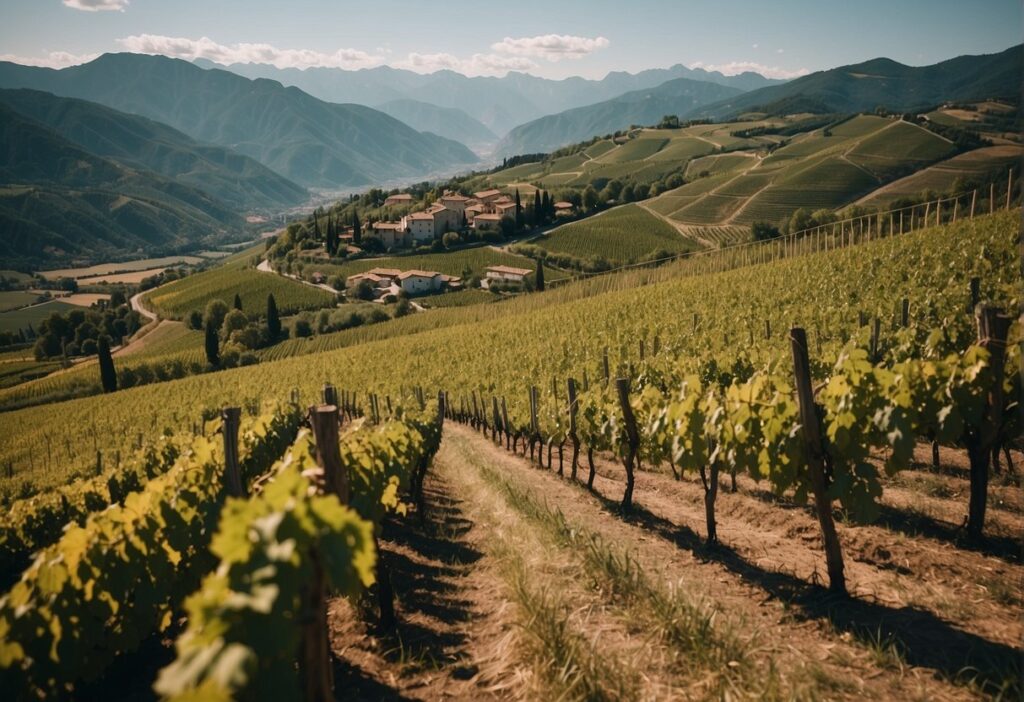
In the Trentino-Alto Adige wine region, you’ll find an impressive variety of wines that reflect the unique terroir of this mountainous area. Whether you’re exploring robust reds or crisp whites, each variety showcases the distinct character imparted by the local climate and soil.
Red Wine Varieties
The red wines of Trentino-Alto Adige are renowned for their depth and complexity. Lagrein, a local specialty, presents a rich, full-bodied experience with notes of dark berries and a hint of spice. The Schiava variety offers lighter, fruitier wines that are perfect for a more casual drinking occasion.
If you enjoy more internationally known varieties, you’ll appreciate the regional expressions of Merlot and Cabernet Sauvignon, which balance fruity and earthy tones. For a taste of something unique to this area, don’t miss out on Teroldego and Pinot Noir, both of which are cultivated to produce wines that truly represent the Trentino DOC and Alto Adige DOC denominations.
White Wine Varieties
The white wines in Trentino-Alto Adige are just as diverse and enticing as the reds, range from Chardonnay with its elegant and buttery notes to the light and crisp Pinot Grigio. If you prefer something more aromatic, the Gewürztraminer here is intensely flavorful, often with a lovely floral bouquet.
Other local favorites include Pinot Bianco and Sauvignon Blanc, which exhibit fresh and fruity characteristics grounded in the region’s mineral-rich soils. Lesser-known but equally delightful varieties such as Müller-Thurgau, Sylvaner, and Riesling Italico also grace the palates of wine lovers, offering a refreshing zing with every sip.
Sparkling Wines
For a celebratory touch, the sparkling wines of Trentino-Alto Adige are a must-try. The Trentodoc label certifies that you’re enjoying a bottle made with the traditional method, involving secondary fermentation in the bottle.
This process gives rise to a range of sparkling wines, from dry to sweet, all imbued with fine and persistent bubbles. These sparkling treasures often incorporate Chardonnay and Pinot Noir grapes, promising a bubbly experience that’s as refined as it is delightful.
Viticulture and Winemaking
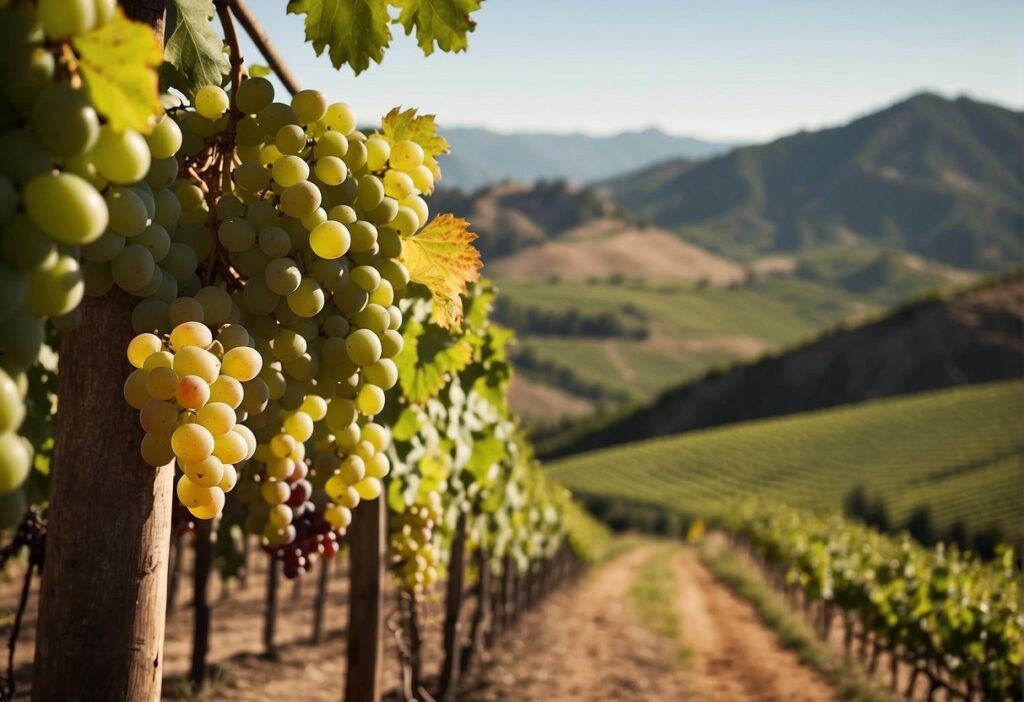
Venturing into the Trentino-Alto Adige wine region, you’ll discover a land where meticulous vine growing practices and refined winemaking processes intermingle to produce wines with distinct acidity, tannin, and fruit flavors. The resulting wine production is a true reflection of the terroir.
Vine Growing
In Trentino-Alto Adige, viticulture is characterized by a blend of traditional and innovative practices. You’ll find vineyards predominantly managed by cooperatives, with a landscape also dotted by small to medium-sized businesses. The vineyards span approximately 15,000 hectares, where emphasis is placed on low yields to enhance quality. In this high-altitude region, the unique Alpine climate and varied soils contribute to wines that exhibit crisp acidity and vibrant fruit flavors.
Winemaking Processes
The winemaking in Trentino-Alto Adige combines age-old techniques with modern technology. Fermentation practices are tailored to preserve the natural fruit flavors and acidity of the grapes.
Red wines from this region often present a robust structure with notable tannins, while whites are known for their aromatic complexity and fresh acidity. The careful selection of yeasts, control of fermentation temperatures, and aging methods are all chosen to express the distinct characteristics of the terroir.
Appellations and Regulations
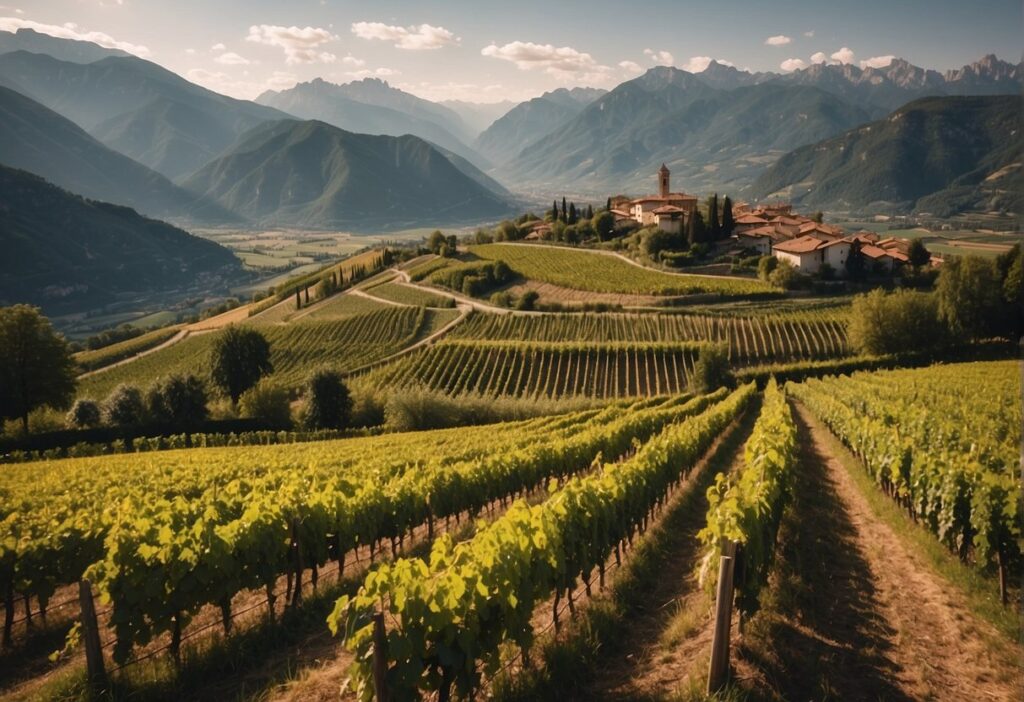
You’ll find that the Trentino-Alto Adige wine region adheres to a variety of appellations, each with its own set of regulations ensuring the quality and authenticity of the wines produced. From DOC (Denominazione di Origine Controllata) to TrentoDOC, these designations tell a story of heritage and strict winemaking rules.
DOC Regulations
In the Trentino-Alto Adige wine region, DOC regulations play a crucial role in maintaining the high standards for which Italian wines are known. Trentino DOC, for instance, encompasses a broad range of wine styles, including whites, reds, rosés, and sparkling wines.
Each wine under the Trentino DOC is produced within designated areas and must follow specific guidelines related to vineyard practices and grape varieties. For example, TrentoDOC is a sparkling wine produced under strict regulations ensuring it follows the traditional method, similar to the familiar processes used in Champagne.
Winemaking Rules
When it comes to winemaking rules, the Trentino-Alto Adige region takes them seriously to preserve the unique characteristics of its wine. Whether it’s a still wine from Valdadige DOC or a prestigious bottle of TrentoDOC, every step from grape cultivation to vinification is governed by rules to protect the integrity and typicity of DOC wines.
These rules cover aspects such as permissible grape varieties, vineyard yields, alcohol levels, and aging requirements. By adhering to these rules, winemakers in Trentino-Alto Adige ensure that each bottle reflects the quality and tradition of this renowned Italian wine region.
Following these guidelines, you’ll enjoy a wine that not only tastes amazing but also tells a tale of its origin, crafted with dedication and expertise.
Wine Regions and Districts
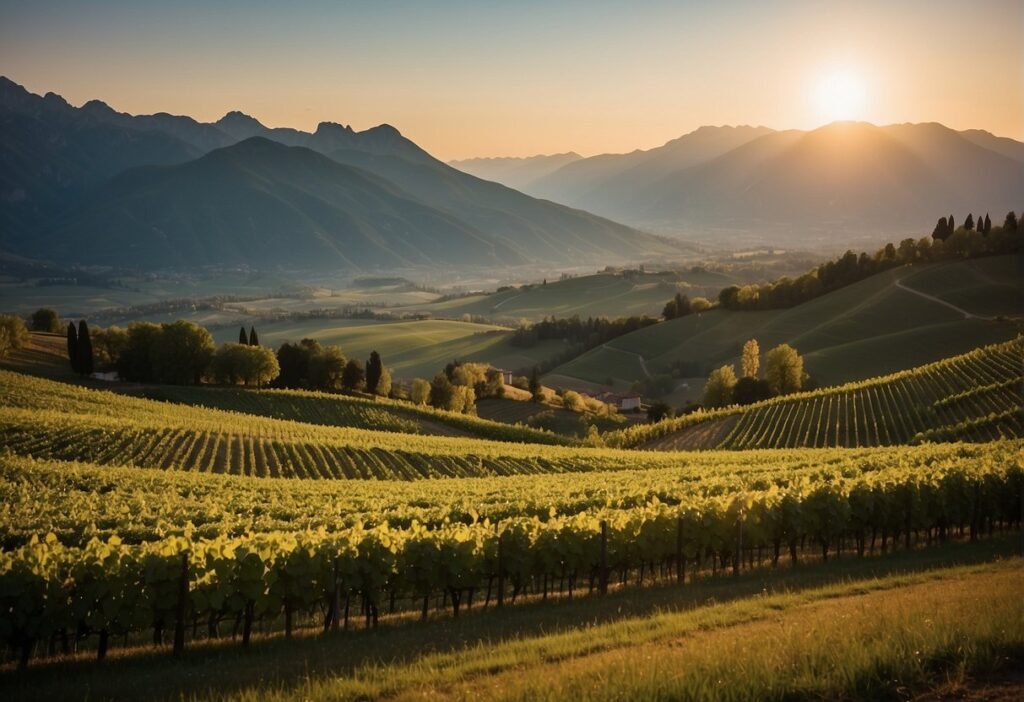
Trentino-Alto Adige stands out with its unique Italian and Austrian influences, delivering a diverse range of high-quality wines. This mountainous area in northern Italy is known for its distinctive sub-regions of Trentino and Alto Adige/Südtirol, each with its own identity and wine varietals that you’ll surely enjoy exploring.
Trentino Sub-Region
In Trentino, you’ll discover vineyards nestled in the valleys south of the city of Bolzano. This area benefits from the temperate climate of Lake Garda and presents a variety of wine styles, primarily focusing on varietals like Chardonnay, Pinot Grigio, and the native Trentino reds like Teroldego and Marzemino. The famed Valdadige wine district, which Trentino shares with Veneto, is particularly notable for its crisp white wines.
Alto Adige/Südtirol Sub-Region
Alto Adige, also known as Südtirol, lies to the north and showcases a strong German influence. The vineyards here are often perched at higher altitudes around areas such as Caldaro and Merano, creating a cooler environment ideal for white varietals like Gewürztraminer and Pinot Bianco.
You must visit the charming wine towns of Tirol and Casteller, where the fusion of Italian and Austrian cultures is tastefully evident in their wine production. Bolzano, the bustling provincial capital, is a melting pot where these cultures and wines converge.
Grape Varieties and Wine Production
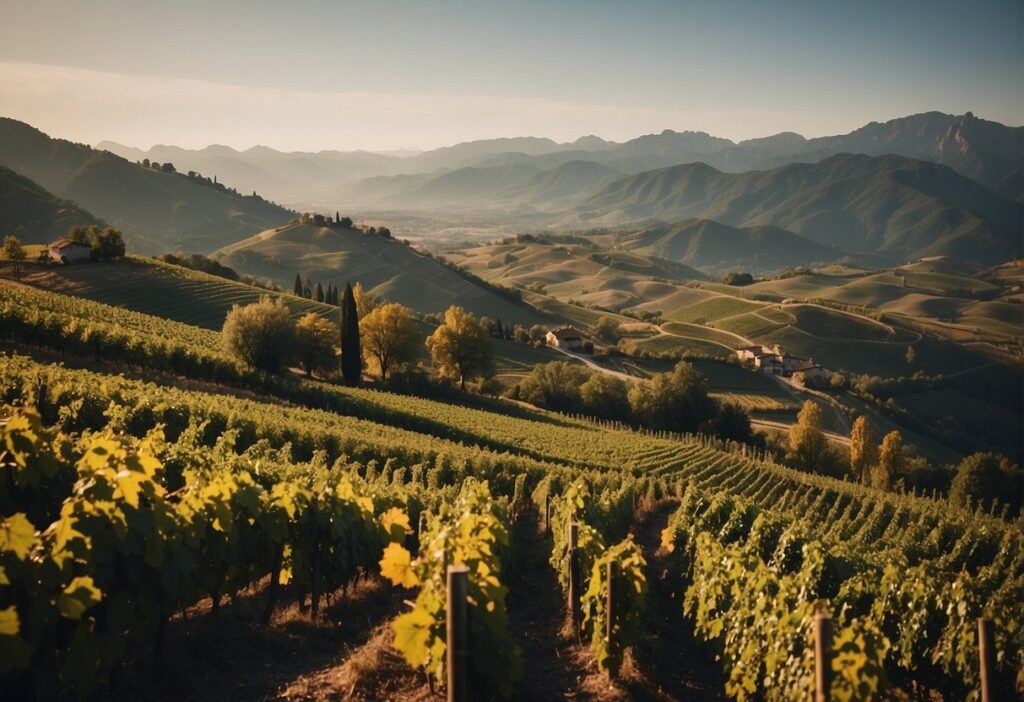
Trentino-Alto Adige wine region offers a fascinating blend of indigenous and international grape varieties, ensuring a diverse range of wines that you can enjoy. Here, centuries-old winemaking traditions embrace both local and globally recognized grapes, producing unique and sought-after wines.
Indigenous Grape Varieties
In Trentino-Alto Adige, you’ll find an array of indigenous grapes:
- Nosiola: This is the only white grape native to Trentino, often used to make the Vin Santo dessert wine.
- Teroldego Rotaliano: A rich red with notes of cherry and almonds, grown primarily on the Rotaliano plain.
- Lagrein: Known for its deep color, robust tannins, and berry aromas—certainly a powerful and impressive red.
- Marzemino: Velvety and slightly aromatic, it produces wines that are both charming and distinctive.
- Vernatsch: Also known as Schiava, this grape creates light-bodied, fruity reds with a characteristic bitter almond finish.
International Grape Varieties
Trentino-Alto Adige is not just about local grapes; the region also excels in cultivating internationally renowned varieties:
- Cabernet Franc & Merlot: These Bordeaux varieties have found a second home here, bringing forth structured and complex reds.
- Pinot Grigio: Internationally loved, here it is often crisp with a lively acidity.
- Chardonnay: Adapting well to the climate, producing wines that range from elegant and restrained to rich and bold.
- Germanic Varieties: Including Müller-Thurgau, which thrives in the cooler parts of the region, known for its floral and fruity character.
In this land of towering Dolomites and lush valleys, the wines you’ll explore are not just beverages, but stories of heritage and innovation, rooted in each grape variety.
Wineries and Cooperatives
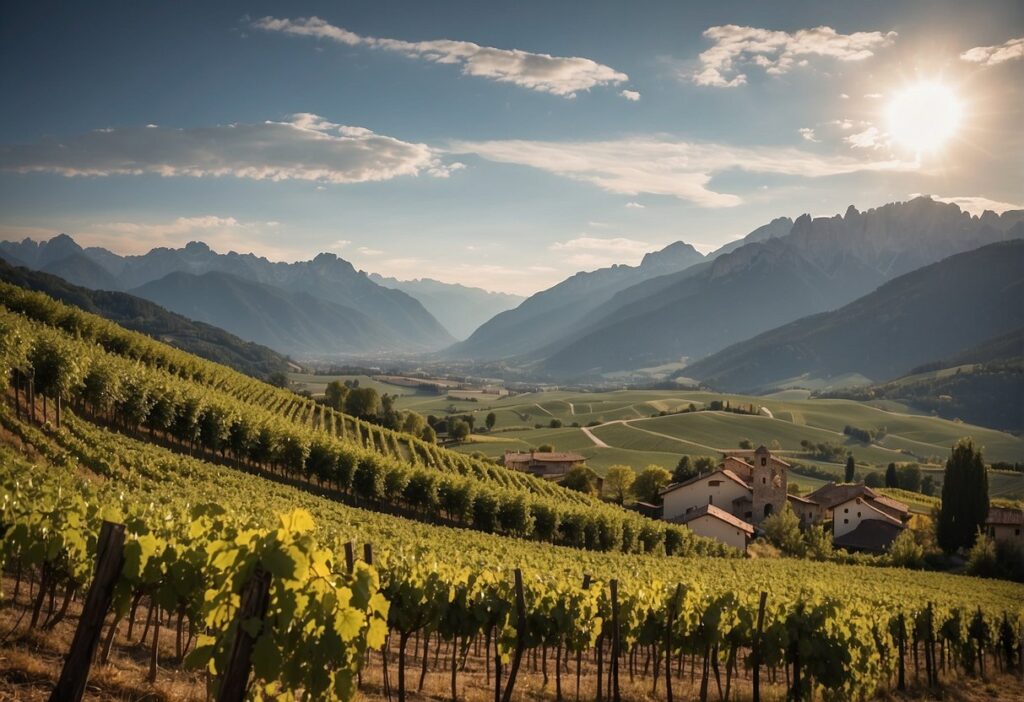
Trentino-Alto Adige is a region renowned for its distinctive wineries and robust cooperative movement. You’ll discover a variety of local wineries with deep historical roots, and cooperatives that illustrate a unique model of winemaking.
Local Wineries
When you explore Trentino-Alto Adige, you’ll be greeted with a wide array of wineries that range from family-owned estates to larger-scale operations. Notably, wineries such as Tenuta Alois Lageder have been perfecting their craft since the 1800s, offering a taste of history with every sip.
In Bolzano, the wines of Santa Maddalena charm you with their tradition and quality. If you visit the town of Caldaro, the local wineries there will showcase the region’s famous varietals in a picturesque setting.
Cooperative Movement
Cooperatives in Trentino-Alto Adige play a crucial role in the winemaking industry. Instituted as a collective effort by local grape growers, these cooperatives often combine the resources of small-scale producers to create wines that can compete on a global scale.
For example, Cantina San Michele all’Adige embodies the cooperative spirit and offers educational opportunities through its renowned winemaking school. The town of Meran is also home to cooperatives that have been central to advancing the regional wine industry, by promoting shared knowledge and a strong community ethos.
Tourism and Wine Tasting
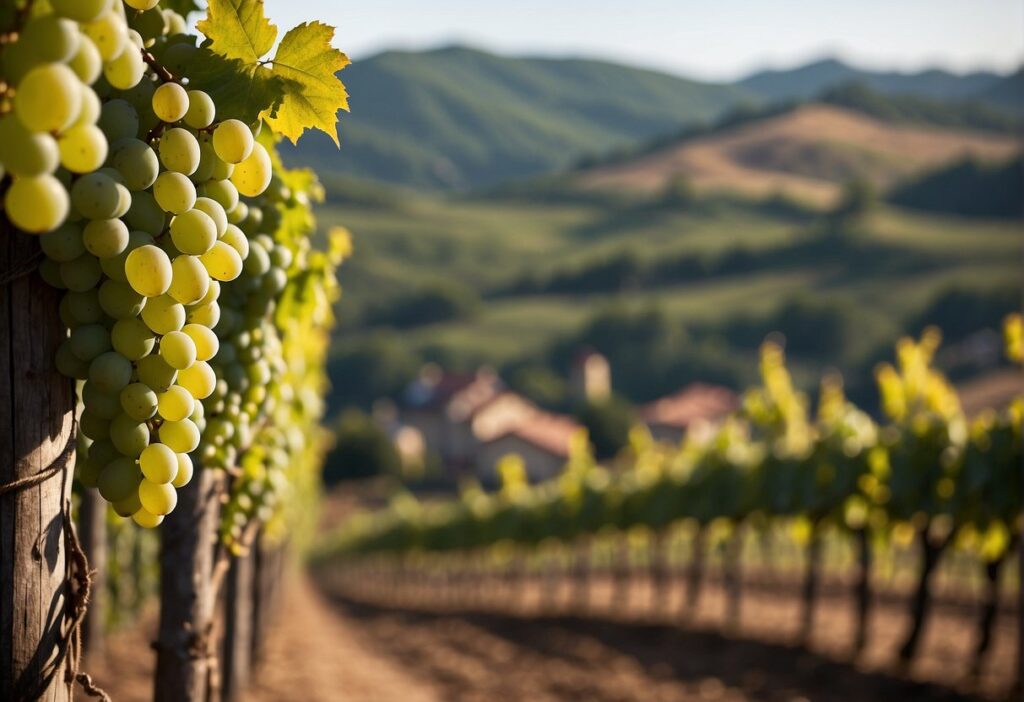
Trentino-Alto Adige is a premier destination for wine lovers like you, offering a unique blend of Italian and Austro-Hungarian cultures. Here’s how you can immerse yourself in the local enotourism.
Wine Tourism
In Trentino-Alto Adige, also known as South Tyrol, you’ll discover a vibrant wine tourism industry. The region boasts a picturesque landscape perfect for your wine-themed excursions.
Whether you’re exploring the valleys of Trentino or the Alpine slopes of Alto Adige, you’ll experience a rich history that seamlessly blends with modern viticulture. Notable for its exceptional wines and scenic routes, this area provides you with numerous opportunities to learn about and indulge in local wine culture.
- Destinations: Plan your route through the enchanting Dolomite mountains or the serene Adige Valley
- Wine Varietals: Expect to taste renowned wines such as the crisp Trentino Pinot Grigio and the robust Alto Adige Lagrein
Winery Visits and Tastings
When you plan your winery visits in Trentino-Alto Adige, you’re in for a treat with a variety of tasting experiences. Get to know the local wine producers and enjoy the intimate setting that only small, family-owned vineyards can offer. You’ll find that many wineries provide guided tours, where you can learn more about the winemaking process from grape to glass.
- Experience: Participate in a guided vineyard tour, like the ones found at Weingut Plonerhof – St. Magdalena
- Tasting Options: Indulge in a variety of tastings which may include light and aromatic whites or full-bodied and complex reds.
By visiting these wineries, you not only get to taste exquisite wines but also support the winegrowers of the region. Your participation in local tourism helps sustain the traditions and livelihood of the communities in both Trentino and Alto Adige.
Pairing Food and Wine
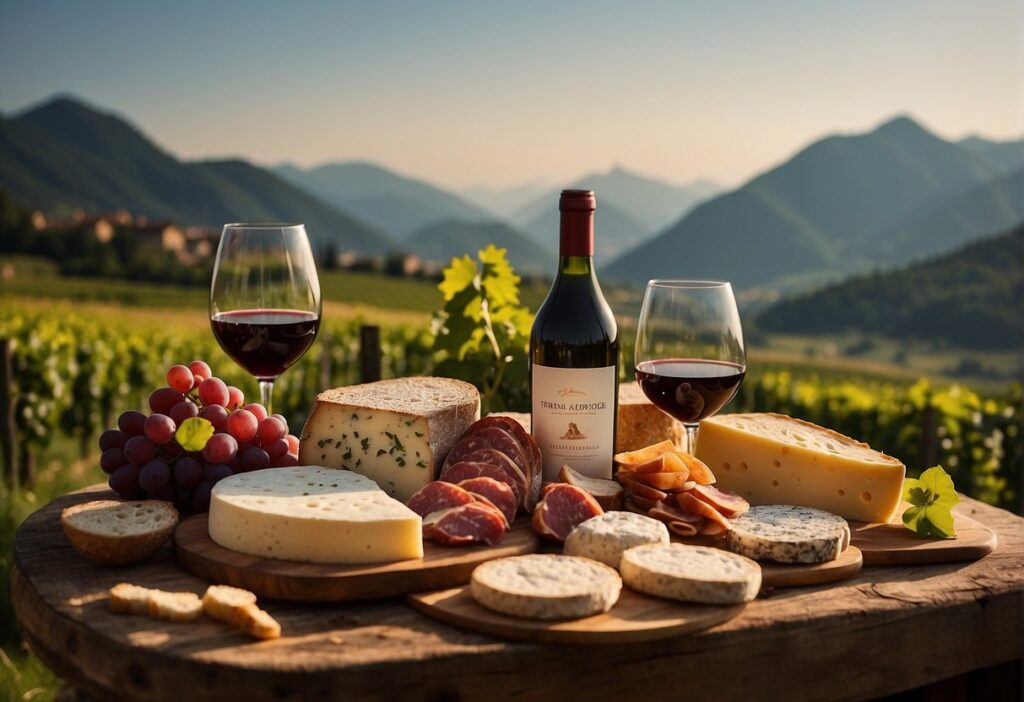
When you visit the Trentino-Alto Adige wine region, the art of pairing food and wine comes to life. Surrounded by the Alps, the diversity of this Italian gem offers a wealth of options. Wineries in this region craft exceptional bottles that highlight the area’s unique terroir.
For red wine enthusiasts, the rich and robust flavors found in Alto Adige red wines pair splendidly with hearty stews and red meats. Imagine sipping a glass of Lagrein with a plate of game or a well-aged cheese.
White wines from the region exhibit fresh and fruity notes, perfect for complementing lighter fares like freshwater fish or a traditional apple strudel. A crisp Pinot Bianco or an aromatic Gewürztraminer enhances the meal with its lively character.
Don’t miss out on sparkling wine from Trentino. The high acidity and effervescence cut through the richness of dishes, such as a creamy risotto or a selection of antipasti.
To get started on your wine journey, or to refine your pairing choices, consider the following:
Red Wines:
- Pair with: Red meats, game, aged cheeses.
- Examples: Teroldego, Lagrein, Pinot Noir.
White Wines:
- Pair with: Freshwater fish, apple strudel, light pasta dishes.
- Examples: Pinot Bianco, Gewürztraminer, Chardonnay.
Sparkling Wines:
- Pair with: Risotto, sushi, antipasti.
- Examples: Trentodoc.
This exploration of tastes will enhance your appreciation for the food pairing culture in Trentino-Alto Adige. Enjoy the journey as you find the perfect harmonization of flavors.
The Future of Trentino-Alto Adige Wine
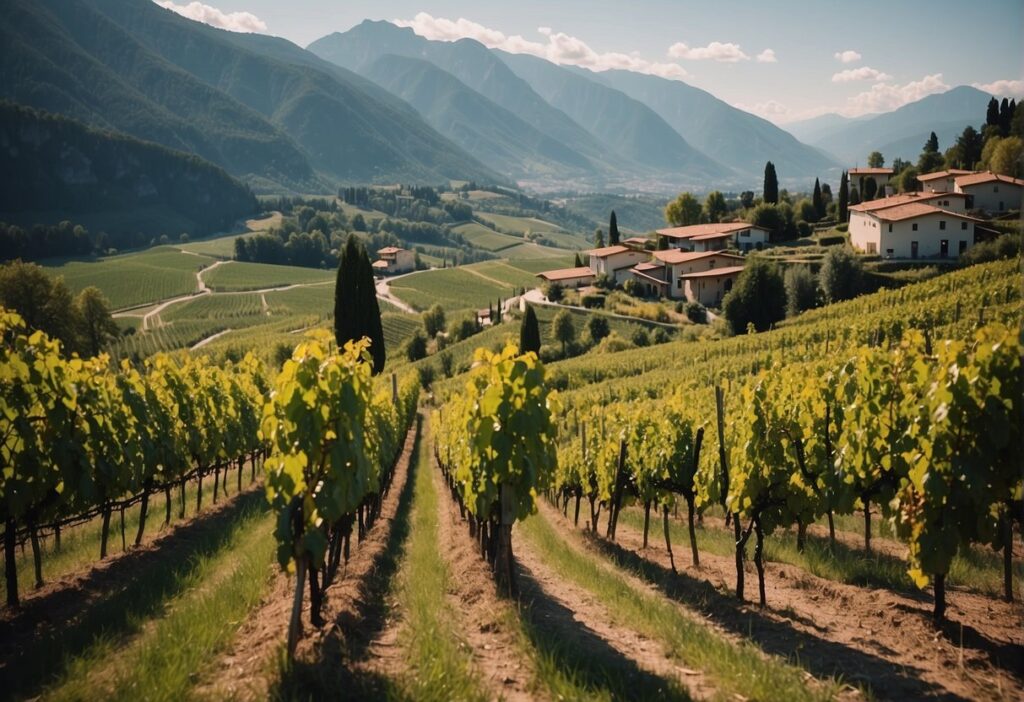
Trentino-Alto Adige is poised for an exciting future, embracing innovation in winemaking and heightened sustainability efforts to shape its wine production.
Innovation in Winemaking
Your experience with Trentino-Alto Adige wines is set to change with the region’s modernization. Innovative techniques are being introduced, such as precision viticulture and the adoption of advanced technology to enhance wine quality.
Wineries, like those mentioned in Your 2024 guide to Trentino-Alto Adige wine region, are leveraging cutting-edge tools to monitor vine health, optimize water use, and customize treatments for each vine. This leads to not just sustainable wine production, but also to wines that are expressive of their unique terroir.
Sustainability Efforts
Trentino-Alto Adige is dedicated to sustainability, with a keen focus on preserving its stunning alpine environment while producing world-class wines. Goals laid out in the region’s 2030 Wine Agenda, referenced by Forbes, include reducing carbon footprint, maintaining biodiversity, and ensuring the overall well-being of both the land and the people involved in viticulture.
By actively working on sustainable viticulture practices, your favorite wines not only taste better but also contribute to a healthier planet.
Educational Resources
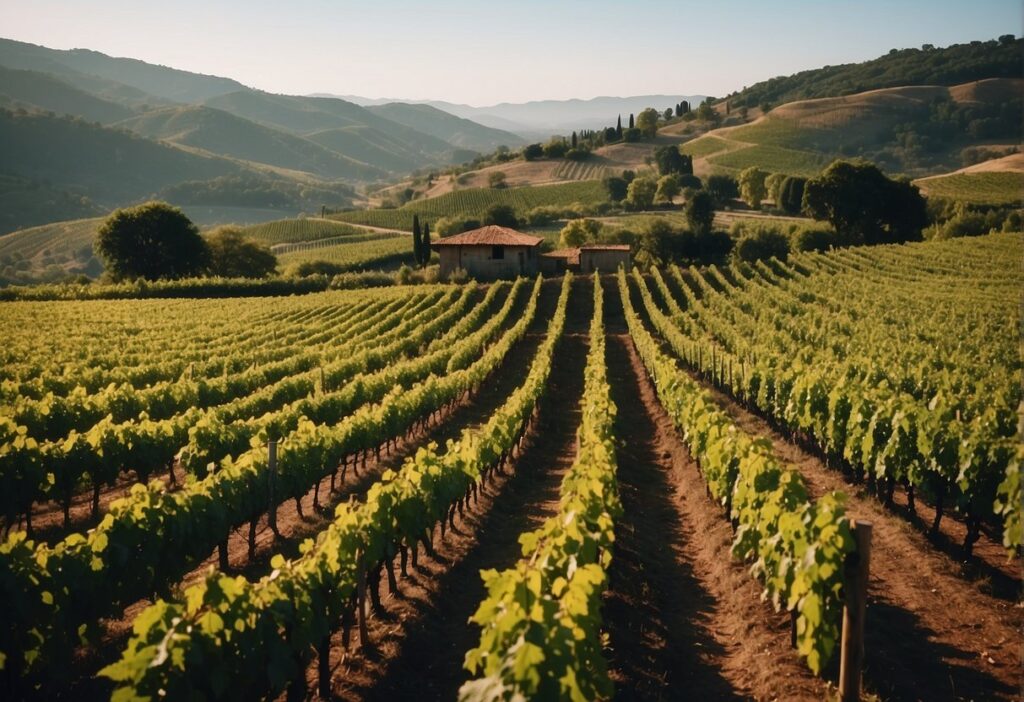
When you’re eager to learn about winemaking and viticulture in Trentino-Alto Adige, the region offers valuable educational opportunities for enthusiasts and professionals alike. Your journey into viticulture can be enriched at the esteemed Fondazione Edmund Mach, located in San Michele all’Adige. This institution is known for its comprehensive programs in winegrowing and enology.
- Courses Offered:
- Introduction to Viticulture
- Advanced Winemaking Techniques
- History and Culture of the Trentino Wine Region
Be mindful that some courses are conducted in multiple languages catering to the region’s diverse linguistic communities, including Italian and German-speaking students. This is a reflection of the region’s unique cultural amalgamation and is particularly helpful if you’re comfortable with either language.
Facilities and Resources:
- Experimental Vineyards: Get hands-on experience in viticulture.
- State-of-the-Art Winery: Observe wine production up close.
- Research Laboratories: Discover the science behind winemaking.
Should you prefer self-guided learning, consider visiting the local wineries. Many offer educational tours where you can learn about the winemaking process, regional grape varieties, and even participate in tastings. This practical experience can be invaluable as you explore the flavors and techniques that define the wines of Trentino-Alto Adige.
Remember, whether you’re a beginner or looking to deepen your understanding of wine production, these educational resources are tailored to help you unveil the intricate world of wines in this picturesque region.
Frequently Asked Questions
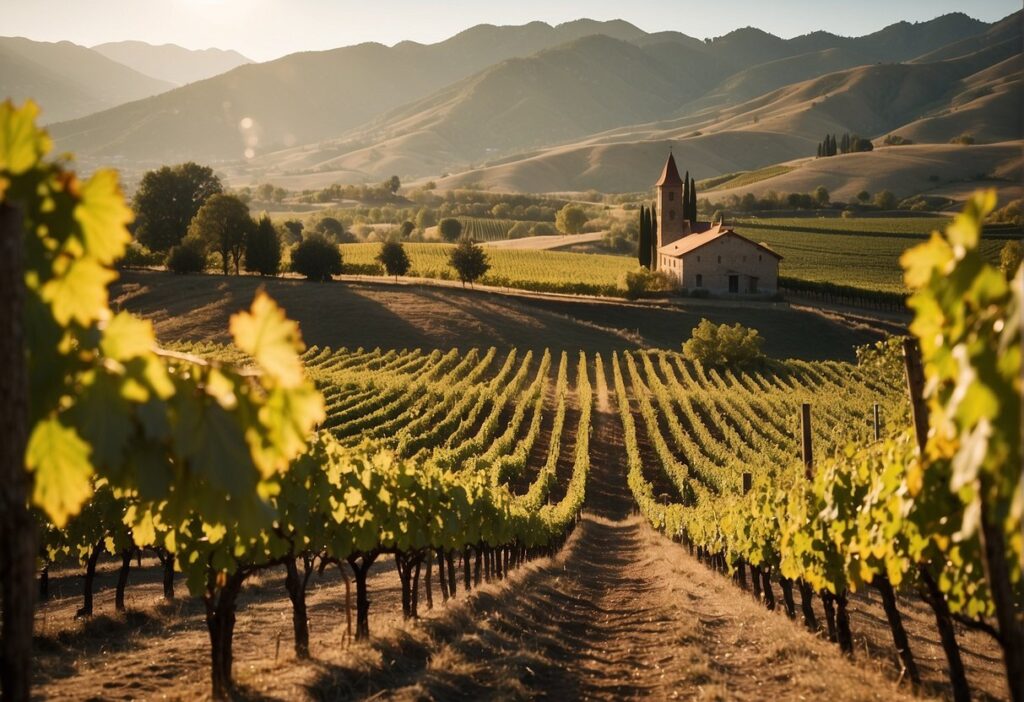
Before diving into the specifics, consider these answers to some common curiosities regarding the rich wine culture of Trentino-Alto Adige. These insights will enhance your understanding and appreciation of the region’s unique offerings.
What types of red wines are produced in Trentino-Alto Adige, and which varieties are most prominent?
Trentino-Alto Adige is renowned for its diverse red wines. Prominent varieties include Schiava and Lagrein, delivering light to medium-bodied wines with a distinct Alpine freshness. The region also produces exceptional Pinot Noir.
How does Trentino-Alto Adige’s winemaking approach differ from other Italian wine regions?
The winemaking approach in Trentino-Alto Adige often involves combining traditional methods with innovative techniques. The region’s mountainous terrain necessitates a hands-on, meticulous farming process, differentiating it from the broader vineyard expanses found in other Italian regions.
Can you recommend some must-visit wineries for a wine tour in the Trentino-Alto Adige region?
Absolutely! You’ll want to experience the Tenuta Alois Lageder, a family-owned estate with a history dating back to the 1800s, perfecting the art of winemaking over generations. It’s an essential stop on any wine enthusiast’s journey.
What are the characteristics that make Alto Adige white wines stand out?
Alto Adige white wines are celebrated for their crisp acidity and vibrant aromatics. The cool Alpine climate yields wines with purity and precision, often exhibiting fresh fruit and minerality, distinguishing them from those produced in warmer regions.
In Alto Adige, which white grape varieties are considered flagship for the region?
The white grape varieties that claim the spotlight are Pinot Grigio and Pinot Bianco. These grapes thrive in Alto Adige’s terroir, resulting in wines that are often compared with some of the best white wines globally, including Austrian Grüner Veltliner and German Riesling.
Are there any distinct terroir features in Trentino-Alto Adige that influence the flavor profile of its wines?
Indeed, the region’s unique Alpine terroir significantly impacts its wines. The combination of high altitude, diurnal temperature variations, and varied soil composition contributes to the development of complex flavors and aromatic bouquets in Trentino-Alto Adige wines.
